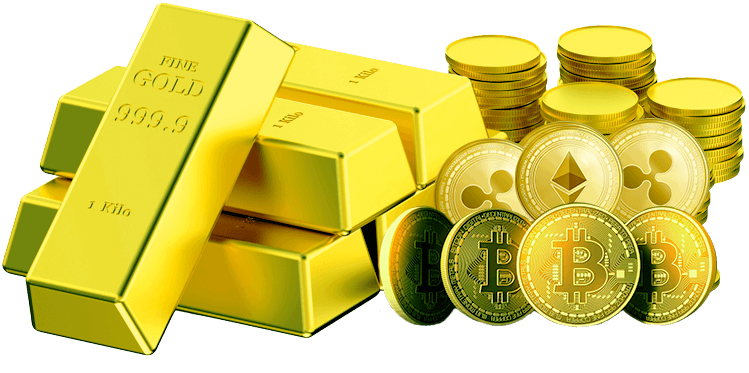How Gold and Oil Prices Relate
When thinking about the timing for purchase or selling of a gold mining stock, an investor should think about the types and numbers of correlations that can help him in his decision-making. There are positive and negative correlations that can help with that decision. They act independently of what’s at issue with the company itself.
One of the most reliable and longest-standing correlations for gold stocks is the price of gold. When the price of bullion is going up, gold mining companies make more money, and so they’re seen as more valuable. But, that correlation works the other way, too. A down-sloping bullion price usually brings down the gold mining stocks because of revenue and profit concerns. Over any short period of time, that correlation can become weaker but in the long term, it’s extremely strong.
There are many other correlations that have to do with gold and gold stocks. We’ll talk about some of the biggest ones and how we can employ them to aid us in investment decisions.
We’re not going to provide a complete analysis of these different correlations. Individual investors shouldn’t worry too much about the details, but they should know about the general ones so they can manage their investments somewhat better.
Gold and Oil
How do gold and oil prices relate? This article will explore that and take you deeper into the question. Let’s get started.
There is a big positive correlation between the price of oil and the price of gold over a long period of time, which means that they tend to go in the same direction.
One of the reasons for that is that when the price of oil is high, the big oil-producing countries see a lot of foreign currency flooding in, and they sometimes diversify that foreign currency by putting some of it into gold. In fact, they often do just that. This then increases gold demand and the price goes up.
There is a very strong correlation. I repeat, there is a very strong correlation. Just think about this. On a scale of 0 (which is no correlation) to 1 (which is perfect correlation), the five-year correlation for oil and gold is about 90%. That is super high. Over a shorter time period, say a three-year period, the correlation is still at 80%. Short-term volatility can weaken the correlation a bit, but it will typically go back to that over time.
Because we’re investors, we look at the short-term and long-term correlation. We try to figure out what the price of gold is going to be in the future. So, in order to help us do that, we look at the price of oil. Where is oil going?
If we see a bunch of stuff that indicate the price of oil is going up, we ask whether or not that’s just a blip or a big shift in supply or demand that will stay that way over the long term.
Based on the answer we get, we come up with probabilistic models, we come up with a price range for oil over a fixed period of time that we might express as, for instance, $30 to the upside of what the price is currently at now and $20 to the downside over the next year.
Based on that model’s parameters, we devise a separate model for bullion that also uses an upside-downside range and then we look at how good gold looks during that same period.
Over the last forty years or so, there has been about a 15:1 ratio between the price of gold and oil – as in, one ounce of gold could purchase about 15 oil barrels.
In the late 90s, the ratio went as high as 30:1 when gold was selling at $300 an ounce and oil was selling at $10 per barrel. That ratio went down to 10:1 in 2008. Since the year 1970, each time that ratio has gone lower than 10:1 or higher than 20:1, or even one standard deviation higher or lower than the historical average, it has reverted back to the mean or even higher within the span of a few years.
If oil stayed at $100 a barrel, then the price of gold would go up to $1500 an ounce if the ratio was 15:1. If oil fell down to $80, the historic ratio could make a good case for $1200 gold.
Some market analysts look to this ratio as the single most important way to figure out the price of gold, but we don’t quite agree. These patterns are useful as one element in a probability model, and they are good to use in tandem with other probability models, which allows investors to get a better picture of markets’ price risk, but not the fundamental value risk.
Currency correlations
Gold is money, and it is traded against the euro, dollar, and other currencies in foreign-exchange markets.
Interestingly, gold and the dollar have an inverse correlation. That means they move in the opposite direction.
Currency strength is also something to think about when it comes to the decision of which gold stocks to pick in which countries.
South Africa, for example, is the world’s biggest gold-producing nation, and it helps us illustrate the point clearly. South African gold mining companies do well when there’s a weak Krugerrand because their deep mines have such high operating costs, and they have to cover them. So, in order to get a return that beats the index, investors either need to overweight or underweight the producers in that country, depending on how the Krugerrand is doing.
For example, many years ago, when a top-performing gold fund was asked how they were doing so well, they said that one of the biggest drivers was that there was a lot of infighting in gold stocks within South Africa, which doubled that year.
The Krugerrand was trading at about 14:1 to the dollar back then. After that, it reversed and the Krugerrand started to get stronger versus the dollar. Gradually, the exchange rate went down to about 7:1 – basically the Krugerrand’s value doubled. Gold bullion reached about $100 an ounce, but all the South African gold stocks went down in value because the appreciation of the Krugerrand cut down on how much money they were making. Many investors went to North American producers, driven in large part because of the relative values of the currency. Foreign exchange rates can have a big impact on cash flow for gold mining companies.



